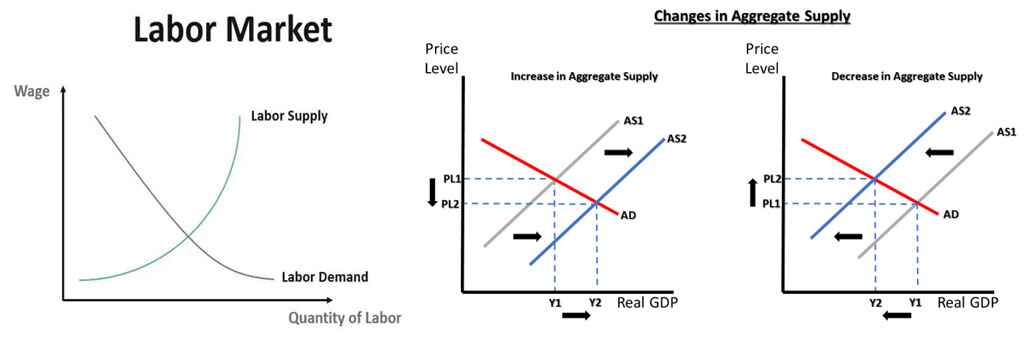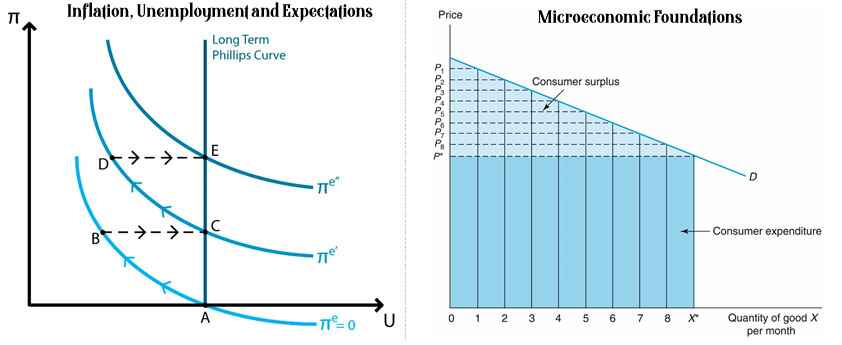Course Learning Outcomes: Intermediate Macroeconomics-1
The intermediate macroeconomics-1 enables students to analyze the macroeconomic performance of various countries using formal analytical tools. It also allows them to evaluate important macroeconomic policies and their implications.
Course Modules:
1. The Labor Market:
Wage determination; wages, prices and employment; natural rate of unemployment; from employment to output.
2. Aggregate Demand and Aggregate Supply:
The derivation of the aggregate demand (AD) and aggregate supply (AS) curves explains how total demand and supply in an economy are determined. Aggregate demand reflects the total quantity of goods and services demanded at different price levels, while aggregate supply represents the total output produced at varying prices. The interaction between AD and AS establishes the equilibrium output, price level, and employment, where the economy operates efficiently, balancing supply with demand at a given price level.

3. Inflation, Unemployment and Expectations:
Philips curve; Okun’s law; adaptive and rational expectations; policy ineffectiveness debate
4. Microeconomic Foundations:
Consumption: Keynesian consumption function; Fisher’s theory of optimal intertemporal choice; lifecycle and permanent income hypotheses; rational expectations and random walk of consumption expenditure.
Investment: Determinants of business fixed investment; residential investment and inventory investment and q theory of investment.
Demand for money: Regressive Expectations Model; Portfolio Balance Approach; Baumol and Tobin’s transactions demand for money; precautionary demand for money; Friedman’s approach to demand for money.

NOTE: The above modules give a rough idea about the topics covered in our Intermediate Macroeconomics-I course. Students will be given modules as per their respective Universities’ outlines after prior discussion.
